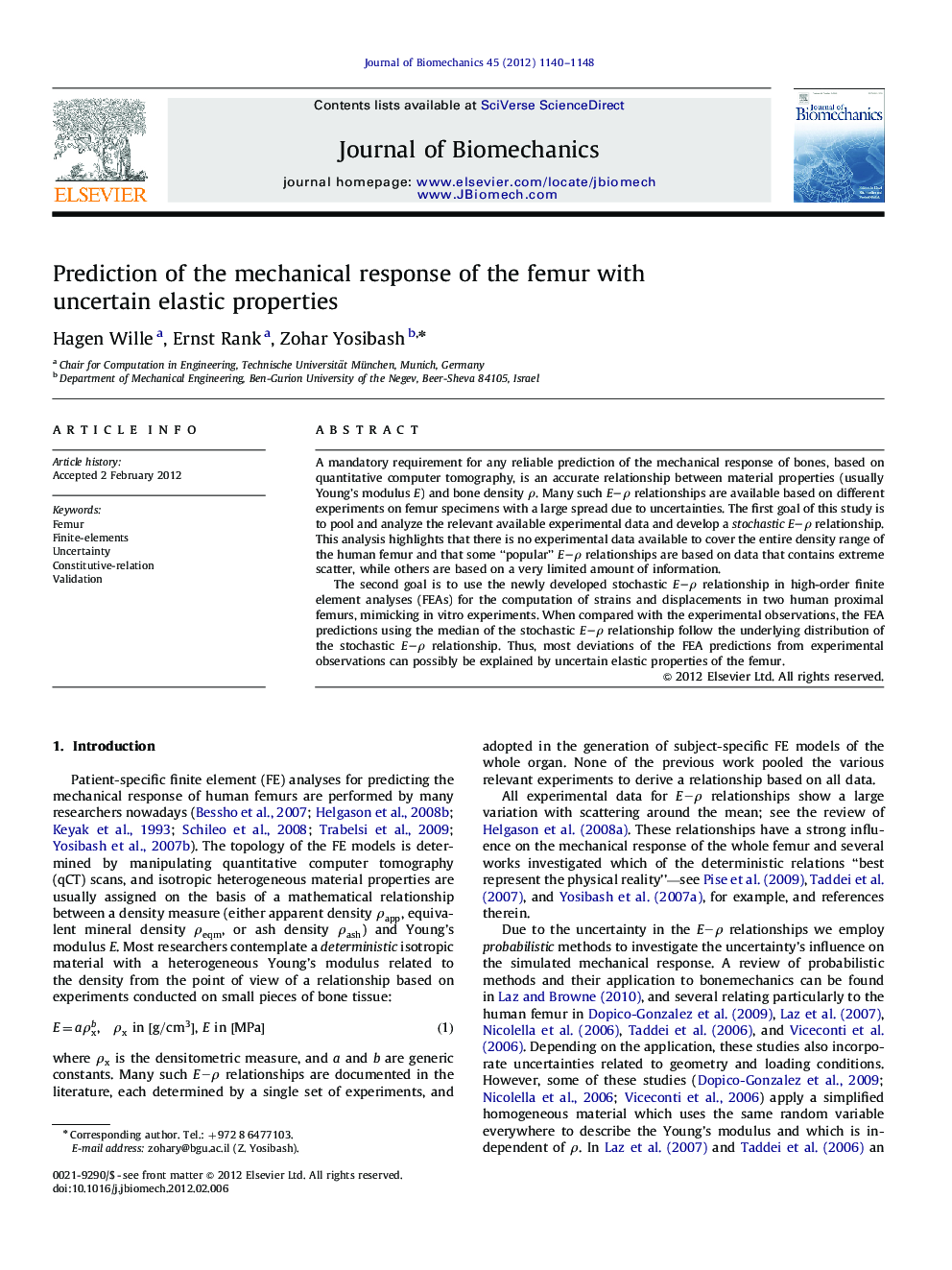| Article ID | Journal | Published Year | Pages | File Type |
|---|---|---|---|---|
| 872653 | Journal of Biomechanics | 2012 | 9 Pages |
A mandatory requirement for any reliable prediction of the mechanical response of bones, based on quantitative computer tomography, is an accurate relationship between material properties (usually Young's modulus E ) and bone density ρρ. Many such E–ρE–ρ relationships are available based on different experiments on femur specimens with a large spread due to uncertainties. The first goal of this study is to pool and analyze the relevant available experimental data and develop a stochastic E–ρE–ρ relationship. This analysis highlights that there is no experimental data available to cover the entire density range of the human femur and that some “popular” E–ρE–ρ relationships are based on data that contains extreme scatter, while others are based on a very limited amount of information.The second goal is to use the newly developed stochastic E–ρE–ρ relationship in high-order finite element analyses (FEAs) for the computation of strains and displacements in two human proximal femurs, mimicking in vitro experiments. When compared with the experimental observations, the FEA predictions using the median of the stochastic E–ρE–ρ relationship follow the underlying distribution of the stochastic E–ρE–ρ relationship. Thus, most deviations of the FEA predictions from experimental observations can possibly be explained by uncertain elastic properties of the femur.
